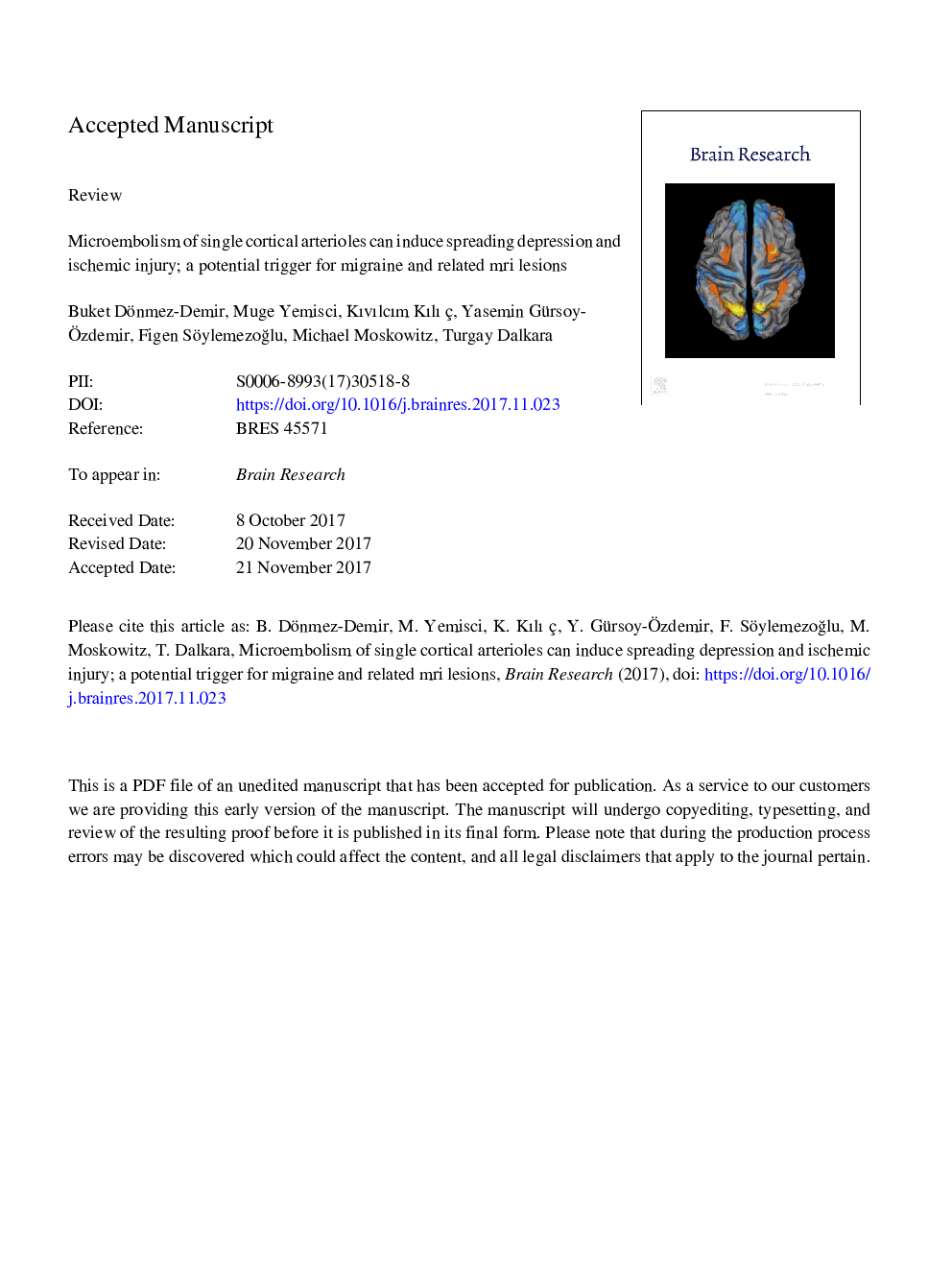| Article ID | Journal | Published Year | Pages | File Type |
|---|---|---|---|---|
| 8839939 | Brain Research | 2018 | 25 Pages |
Abstract
Increasing epidemiological evidence suggests an association between migraine with aura (MA) and cardiovascular events. There is experimental as well as clinical evidence implying cerebral microembolism as a potential trigger for MA attacks. Microembolism may also account for some of the ischemic MRI lesions more commonly observed in MA than in general population. Limited size of clinically-silent MRI lesions suggests isolated occlusion of a small vessel. However, it is not known whether selective thrombosis of a small arteriole (e.g. single mouse penetrating arteriole - PA), can induce cortical spreading depression (CSD), the putative cause of migraine aura and, hence, trigger an MA attack. For this, we mimiced thrombosis of a small vessel caused by microembolism by selectively occluding a PA just before diving into the cortex (radius; 10-25â¯Âµm) in the mouse. Clotting was induced with FeCl3 applied focally over the PA by a glass micropipette for 3 min. DC potential changes were recorded and the alterations in cortical blood flow were monitored by laser speckle contrast imaging. Mice were kept alive for 1-4 weeks and brain sections were stained with H&E or luxol-fast blue to evaluate changes induced by PA occlusion. We found that single PA occlusion consistently triggered a CSD originating from the tissue around the PA soon after occlusion and induced delayed, small ischemic lesions within territory of the affected vessel a few weeks later. These findings suggest that cerebral microembolism can lead to MA attacks and may account for some of the silent brain lesions.
Related Topics
Life Sciences
Neuroscience
Neuroscience (General)
Authors
Buket Dönmez-Demir, Muge Yemisci, Kıvılcım Kılıç, Yasemin Gürsoy-Ãzdemir, Figen SöylemezoÄlu, Michael Moskowitz, Turgay Dalkara,
